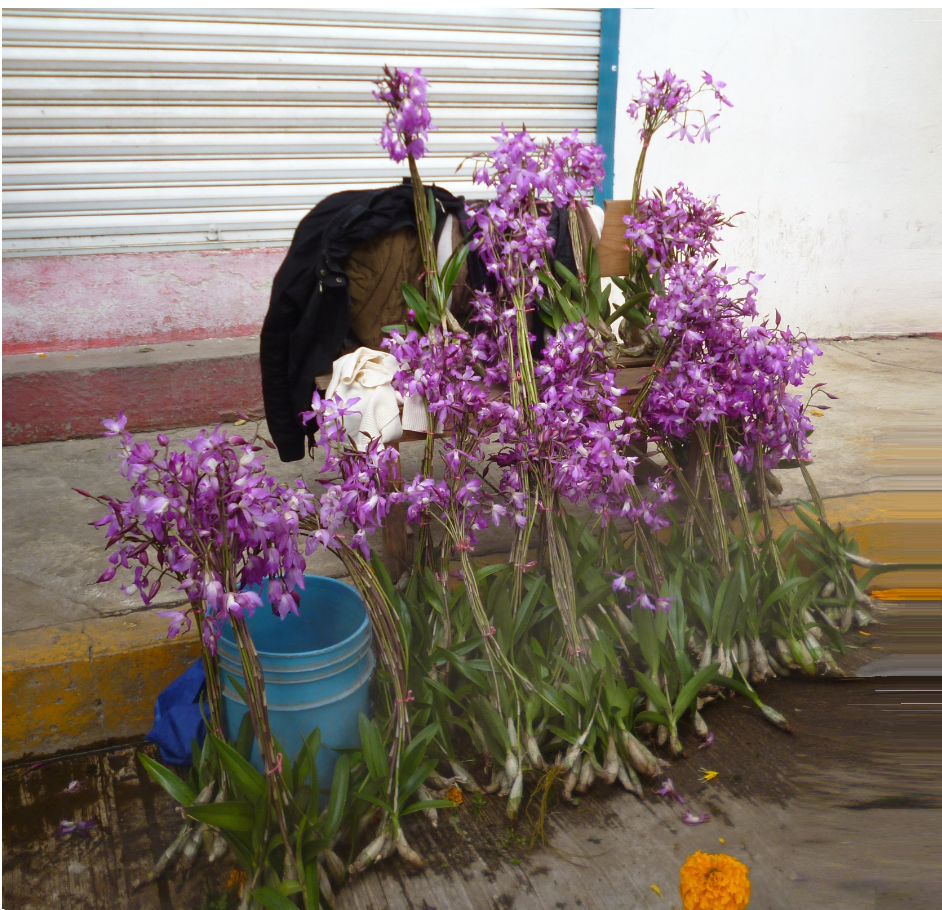Can wild orchid harvest be sustainable? The response of wild Laelia autumnalis to partial harvest
- Aucencia Emeterio Lara, Mariana Hernández Apolinar, Alejandro Flores Palacios
- Mar 30, 2022
- 3 min read
Updated: Apr 6, 2022
Orchids are harvested around the world, and there is significant concern about its sustianability. In particular, harvesting entire plants is – for many epiphytic orchid species – probably not a sustainable practice. Harvest practices that involve the partial collection of plants, where only some stems are harvested, might be a more sustainable alternative. In this blog, Aucencia Emeterio Lara, Mariana Hernández Apolinar and Alejandro Flores Palacios describe their new findings on the ornamental Mexican orchid, Laelia autumnalis, reporting on one of the first studies to look at the effects of partial-plant orchid harvest.
Laelia autumnalis (La Llave & Lex.) Lindl. is an epiphytic or rupicolous orchid, growing in the mountains of central Mexico. Called “The Flower of All Saints”, the species features a beautiful raceme of flowers from October to December. For centuries, it has been valued for its ritual and ornamental values, and inflorescences, sections and/or whole plants are sold in high quantities at local and regional markets, both across and outside of their natural distribution area.
Importantly, the species is often subject to partial harvest, with collectors cutting the two most recently grown pseudobulbs, including the flowering one, leaving behind the “mother” plant. We wanted to understand the effects of this traditional partial collection technique that has been practiced for many years in Tenancingo. So, we experimentally tested the impacts on the survival, growth, and flowering of the individual plants that had be partially harvested. We also explored whether if removed sections might be used to assist with population recovery.

In the study, we selected reproductive plants of three different sizes and removed the latest two pseudobulbs (including the flowering one). No plant died due to harvesting, and >55% produced new pseudobulbs annually. Among the control plants, pseudobulb production was constant (87%) but not in the ones subjected to partial harvest. At the beginning of the experiment, all growing fronts supported flowering inflorescences, but after the harvest, only 8.9% flowered during the next season and 11% in the following season.
Our research demonstrates the negative effects of harvesting the youngest two pseudobulbs. It reduces the individual growth and reproduction of L. autumnalis, key demographic processes for the maintenance of natural populations, and of greater relevance in those subject of continuous extraction. Where possible, the harvest of pseudobulbs must be eliminated as a management practice. However, where epiphytic orchid harvest continues, such partial-harvest practice is likely preferable to the whole-plant extraction practiced in many countries. Nevertheless, the plants in our study took more than two years to recover the equivalent lost biomass. So, it is necessary to give rest periods to the collected plants, letting them recover biomass and nutrients. Moreover, there is a need for further study on other species and across longer time horizons to understand how they might respond to partial harvest.
Important, the reintroduction of the pair of pseudobulbs harvested may create opportunities for restoration. In our study, very few of the removed sections died after being transplanted, and <40% developed new small pseudobulbs yearly. As such, these sections could be used to restore populations, though these must be assisted with organic nutrients and water. For example, pseudobulbs that are confiscated from illegal harvest could become part of restoration programmes.
In many places, policy makers have chosen to ban and stop harvest and trade of orchids. However, especially where harvest is traditional, linked to rural livelihoods, and/or where illegal trade is hard to control through enforcement, there is also need for basic research to better understand the impacts of harvest. Studies on different management practices are a key part of identifying whether, and how sustainable orchid harvest is possible.
Read the full article: https://www.sciencedirect.com/science/article/pii/S0378112721002930
For more details contact: emla58@hotmail.com



Comments